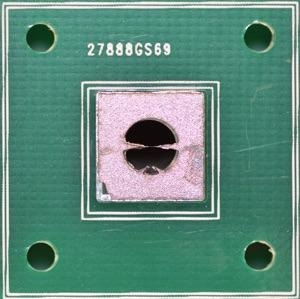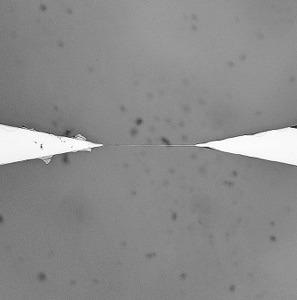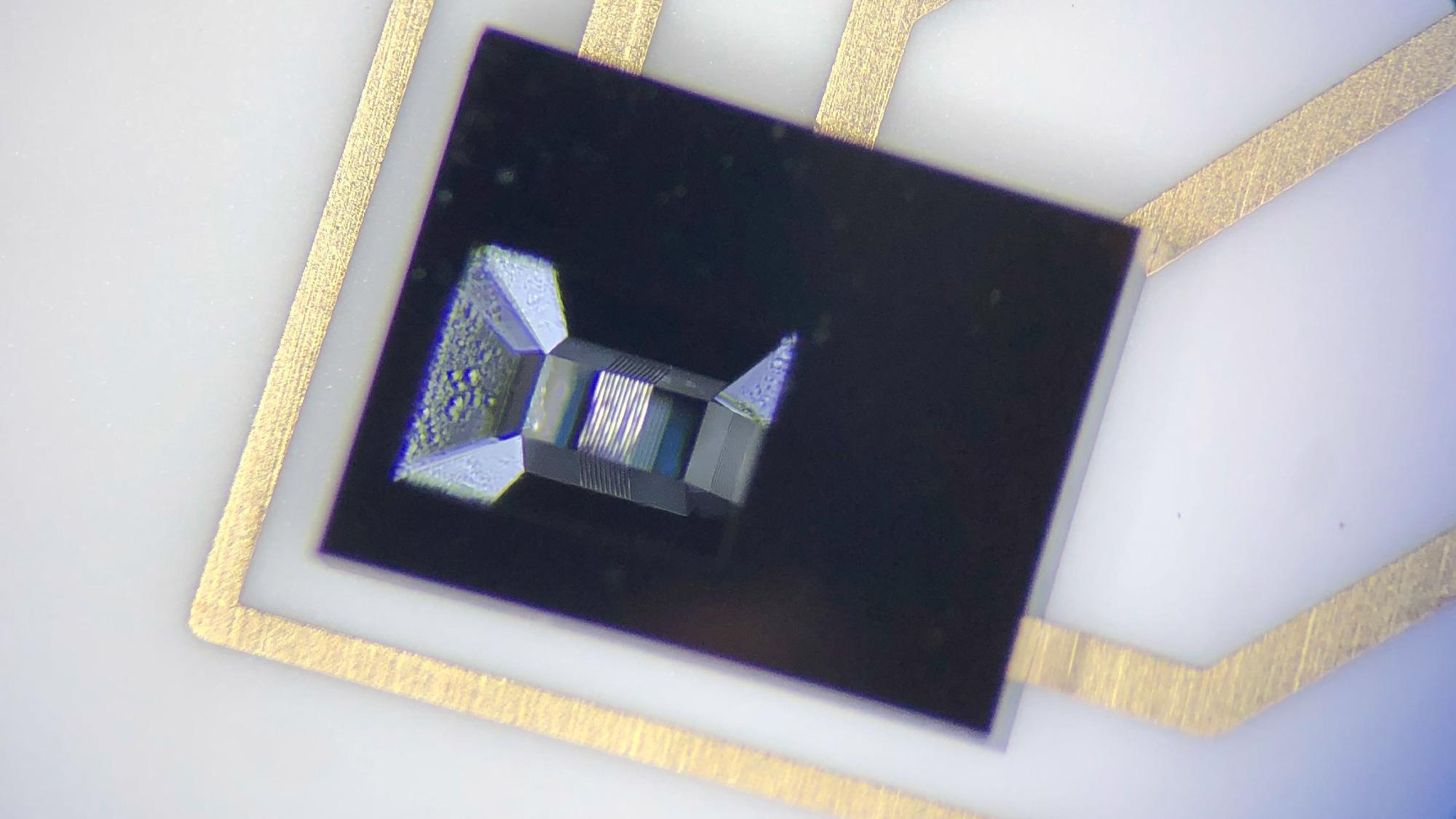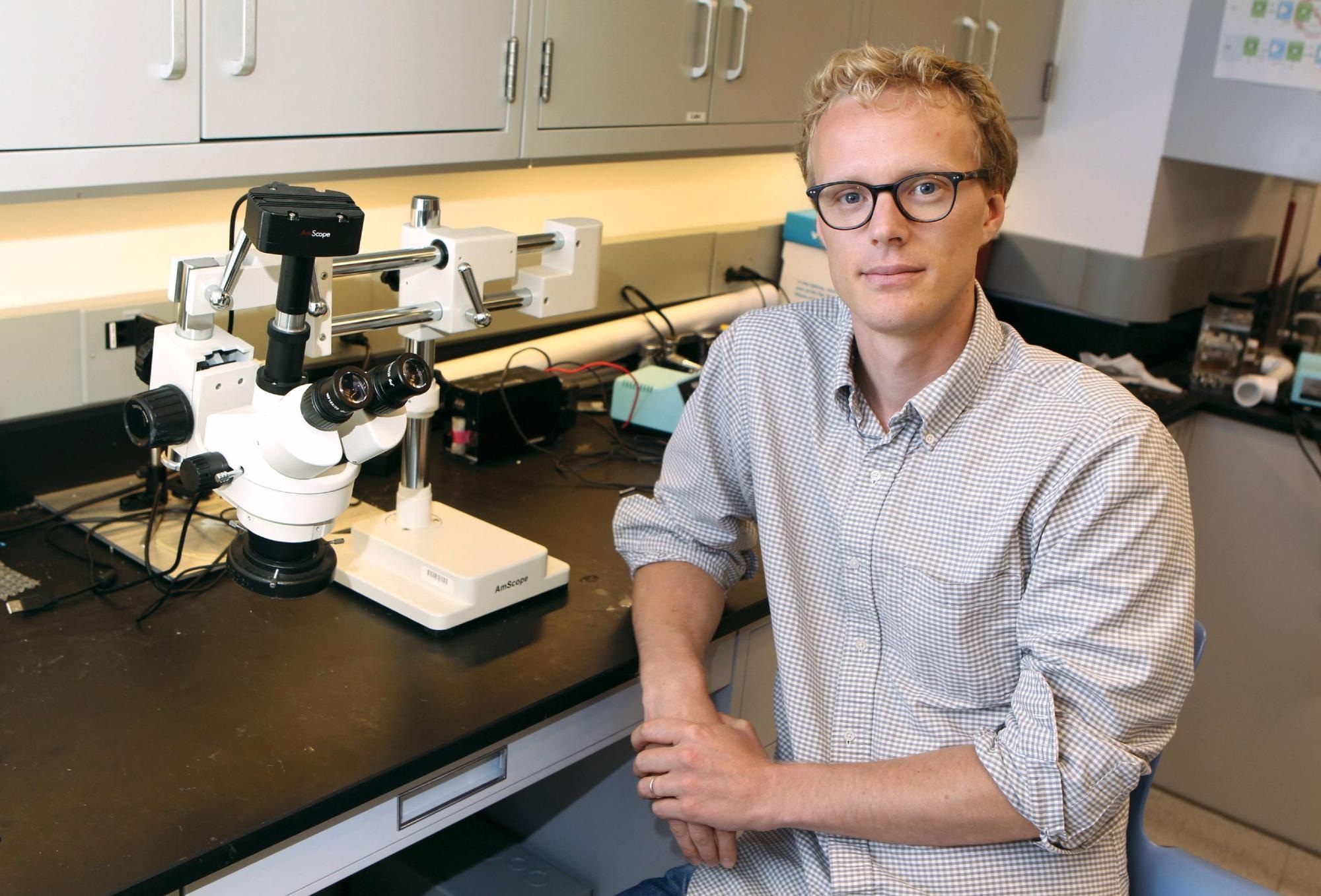AZoSensors speaks with Dr. Marcus Hultmark, an associate professor in the Department of Mechanical and Aerospace Engineering at Princeton University. Marcus led a team that found a revolutionary new approach to measuring flow rates.
What makes the EFV sensor different from other available flow sensors?
The way EFV measures the flow is different from other sensors. Instead of relying on thermal effects or pressure, which are the most common methods, it relies on viscous forces. It measures these viscous forces through a sensing element that looks much like a typical strain gage, but without being mounted on a membrane.
Instead, the fluid can flow right through the strain gage, which makes the forcing very different from what is typical. Its miniscule size allows viscous friction to dominate the strain signal, which makes it very sensitive to small flow rates, and the two-dimensional design makes it very convenient to manufacture using standard semiconductor manufacturing tools.

The sensor chip. Image Credit: Tendo Technologies
Your team initially set out to measure temperature; how did the course of your research change?
The research first changed so that we were determined to figure out what was going on with the sensor. We had to describe the mechanics and the fluid flow to better understand our observations. Later, we could use that knowledge to improve the temperature measurements as well, so it was a true win-win situation (only some time was lost).

A closeup of the nanoribbon. Image Credit: Tendo Technologies
Could you explain the role that nanoscale ribbons play in the EFV sensor?
The nanoscale is essential for EFV to work. The size does two things that are both necessary to successfully measure flow using EFV:
(1) It changes the nature of the forcing from an inertially dominated pressure to a viscously dominated force.
(2) It changes the way the element is reacting to the force through strain.
The ribbon is only a fraction of a micrometer thin, enabling very high aspect ratios (even if it is only 0.1 mm long, the aspect ratio can be up to 1000). As such, it behaves mechanically very differently from a beam or cantilever. I like to think of it more like a long rubber band (although not made from rubber, obviously) that stretches when it is forced. Together these two concepts yield a unique sensor that can be used in any fluid (gas or liquid).
Why is the EFV sensor cheaper to manufacture than other flow rate detector technology?
What makes it cost-efficient is the simple two-dimensional design, and the fact that silicon is the base on which it is built. This makes the manufacturing steps few and simple. Together with the small size, we can fit more than 1000 sensors on one silicon chip, resulting in very low cost.

Using ribbons many times finer than a human hair, Princeton researchers have developed a highly sensitive flow meter that is inexpensive and useful in large-scale commercial and industrial applications. Image Credit: Yuyang Fan
What are some of the consumer devices that could benefit from the EFV sensor?
There is a long list of potential applications, from water monitoring in household appliances, to dispensing monitoring in medical devices, to airflow measurments in HVAC systems. The most important question for us is not which application can benefit, but which application can benefit the most.
In which industries is the sensor likely to be used in in the future?
The most likely industries to be early adopters are those benefiting from industrial automation, especially in industries that deal with many different fluids. Advanced manufacturing and pharmaceutical manufacturing could also be early adopters, as well as medical devices and HVAC.

Dr. Marcus Hultmark led a team that found a revolutionary new approach to measuring flow rates. Image Credit: Frank Wojciechowski / Princeton
You and your team have gone on to develop Tendo Technologies. What’s next for you and the team?
Right now, we are working with industrial collaborators to truly transition the technology from the research lab to the marketplace.
Where can readers find more information?
Readers can find more information on the Tendo Technologies website.
About Dr. Marcus Hultmark
 Dr. Marcus Hultmark is an associate professor in the Department of Mechanical and Aerospace Engineering at Princeton University and director of the Princeton Gas Dynamics Laboratory. His research interests include a variety of problems related to fluid mechanics, with a focus on problems involving turbulence, such as heat and mass transfer, as well as drag reduction and wind energy.
Dr. Marcus Hultmark is an associate professor in the Department of Mechanical and Aerospace Engineering at Princeton University and director of the Princeton Gas Dynamics Laboratory. His research interests include a variety of problems related to fluid mechanics, with a focus on problems involving turbulence, such as heat and mass transfer, as well as drag reduction and wind energy.
Experimental studies are combined with theoretical work, and an important part of his research program is the development and evaluation of new sensing techniques to investigate these phenomena with high accuracy and resolution.
He was awarded the 2016 Air Force Young Investigator award, the 2017 NSF Career award and in 2017 he received the Nobuhide Kasagi Award. He received his M.Sc. degree from Chalmers University, Sweden, in 2007 and his Ph.D. from Princeton University in 2011.
Disclaimer: The views expressed here are those of the interviewee and do not necessarily represent the views of AZoM.com Limited (T/A) AZoNetwork, the owner and operator of this website. This disclaimer forms part of the Terms and Conditions of use of this website.